Interview conducted for Art21 in June of 2022 by Jurrell Lewis. Original photography for Art21 shot by Berk Kır. All other photography courtesy the artist and Green Art Gallery, Dubai.
Look for the plus icon next to videos throughout the site to add them here.
Save videos to watch later, or make a selection to play back-to-back using the autoplay feature.

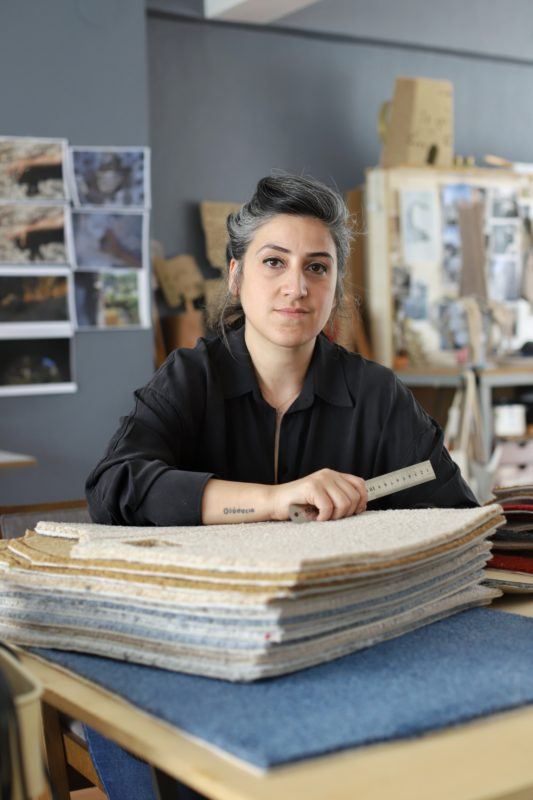
Hera Büyüktaşçıyan unfolds the layers of history through sculpture

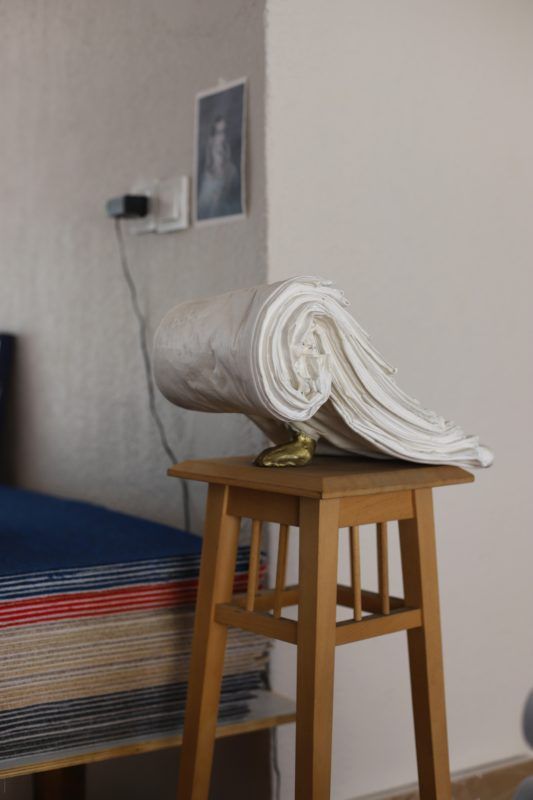
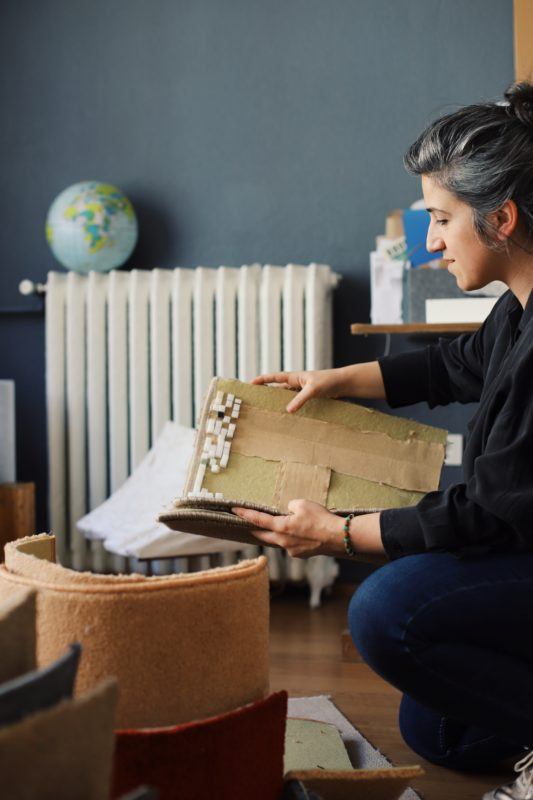

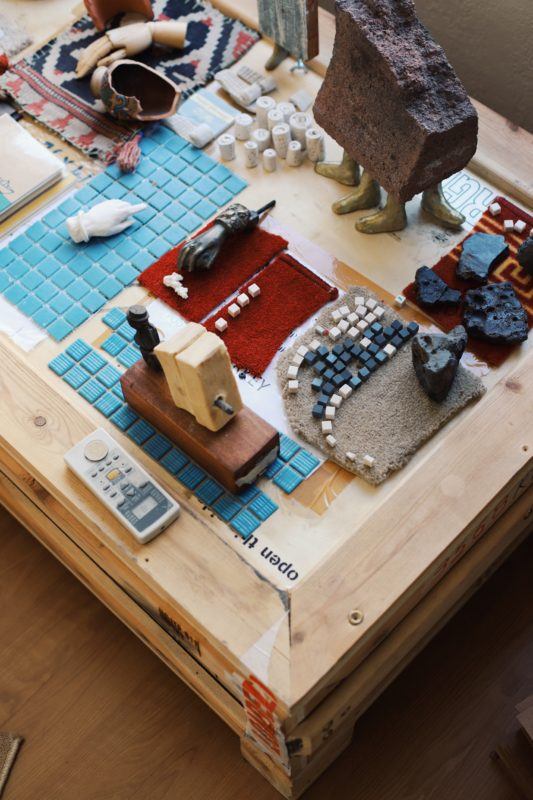
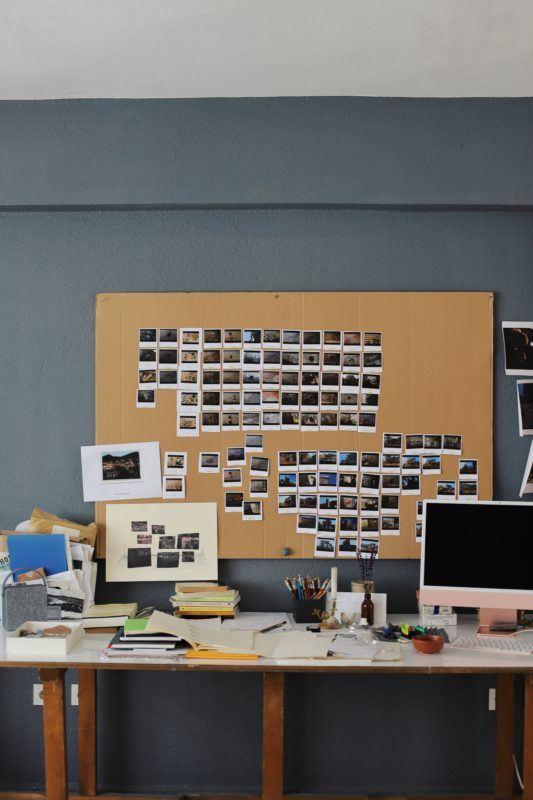
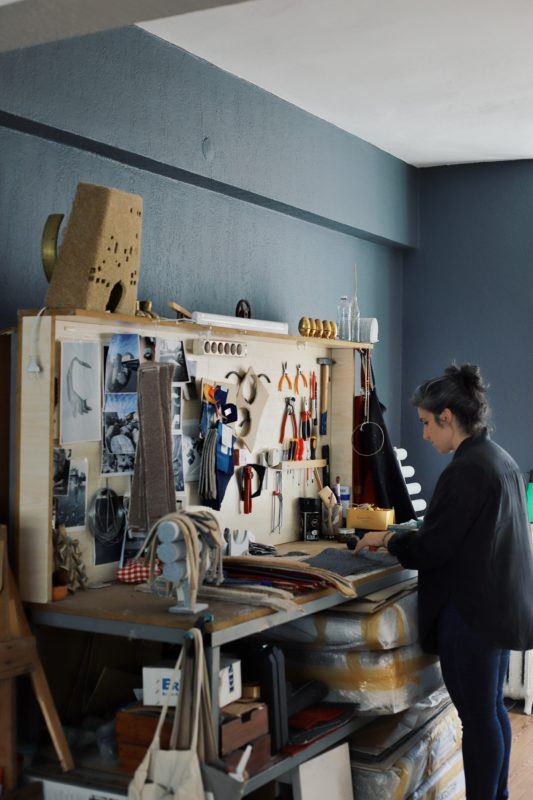
Art21 – In your sculpture you’re thinking about histories embedded in architecture, things layered atop one another, is that right?
Hera Büyüktaşçıyan – Yes, especially ideas of surface and the palimpsest are things that I’m often looking into. The palimpsest is a recollection of timelines that overlap with one another and create a hybrid existence. This hybrid nature forms itself, sometimes through erasing one another’s traces and re-writing over the remnants and sometimes by becoming a part of someone else’s existence. Almost like a living organism.
This is the way I read history, personal and social narratives that have a cyclic movement as a pattern of time that repeats itself. This also reflects upon how I perceive spaces – a way of seeing that gradually settled within me while growing up in a city like Istanbul, which is full of spolia architecture. You see different timelines colliding in the same form and creating a new entity.
Going back to the idea of surface; terrestrial memory and reading various timelines through decomposing the strata is also something that fascinates me. When different aspects come together they create a sense of tension, like a surface tension. But also a coexistence, that manifests dualities where diverse elements intersect and remain in sync or in contrast to one another. Overlapping layers that anchor with each other create a feeling of embodying something new through the hybrid nature of coexistence.
Architecture is a body in itself. Like a crust, a shell that surrounds us on which we leave our traces. Our own recollections and woven histories breathe within spaces built around us. It is an agent that can enable one to deconstruct history not only physically, but mentally, through the tidal movements of our mind. And then reconstruct it by re-assembling all these different elements of time.
How do you access the histories that are held within architecture?
It all begins with a personal encounter that sometimes comes up coincidentally…a trace or a detail that pulls me in by activating or triggering a familiar memory, an emotion that resonates within me. Something that I observe within an architectural fragment begins to vocalize in different terms and through that encounter it becomes an agent enabling me to anchor with my own self and unfold layers that are unknown. Whilst unearthing something about a space, or any fragment, the material and visual references of these elements also guide me throughout my working process and interventions on the form.
My practice is very research based, yet it’s not necessarily only archival material that I dive in, as at times they may become too dominant and might not allow me to hear my own voice. Usually my research phase becomes a combination of the historical, personal, and material memory that comes with a constant act of digging and unfolding layers. Deconstruction is an aspect that enables one to translate something and build a new language out of it: an instance, a form, a particle of time that can constitute a new sentence. It’s not only our recollections that direct us whilst interacting with the form, but the memory of our senses, our hands in particular, things that our fingers remember, actually shape our creations or organisms that are embodied out of those narratives.
In your work, the research you’ve done is not always made explicit, do you feel it’s important that viewers understand the full breadth of history you’re engaging with?
Abstraction in storytelling is something that helps me to sustain the weight of the narrative itself; the gravity, the weight of certain contested histories. I do not make the histories I’m resurfacing very explicit in the work in order not to consume it, but rather prefer to reflect upon it in a gestural way. Of course particular audiences access the narrative of the work more easily, but the language of the form, and the poetics of the material itself resonate with the viewer that might perceive the work with a different perspective and by their own cultural references.
The language of abstraction enables the forms to exist as entities by themselves that resonate with our senses and with our personal recollections. I think this is one aspect that has liberated me from taking on the weight of particular narratives I engage with. I rather address these histories through poetry, text, publications and sometimes through the way I name my works. I sometimes feel that the historical narratives the work derives from might overpower the presence of the form itself. Each form has its own history through its material memory or genealogy, alongside the ruptures of time they emanate from.
Many of the architectures you’re engaging with are in states of disrepair or ruin, is there a preservational aspect to your practice?
Internally there is an urge to preserve, but at the same time that I should accept the dynamics of time as a cycle, where destruction follows recreation. This is an aspect that I’m looking at within the nature of hybridity that nurtures my work. The Theodosian ruins that inspired the piece I made for the New Museum Triennial: Soft Water, Hard Stone could be an example. The monumental remnants of the marble columns of the historical arch are in the middle of a bustling square where they are completely invisible and give the impression they are pushed aside as unimportant fragments, as they remind of an unwanted past. You see trolleys or cars parked between these huge monoliths that are damaged, partially vandalized. Despite their humongous scale, they are completely invisible.
At first glance it upsets one to see them in such condition, yet they are still a part of an ecosystem where one could see them sharing a similar ground or fate of invisibility with the migrant economy that flows around them. So, I do not think my works urge to underline such contested narratives for preservational aspect only, but rather propose seeing the other side of things by understanding the nature of a coexistence and the repetitive nature of time and history through different actors. Even the trollies that are left leaning on these ancient slabs or columns show the colliding moment of timelines in contrast to each other. It shows how history operates with the notion of erasure and rewriting. As human beings, we have a tendency to forget. There is a constant repetition of learning and unlearning. History keeps repeating, time keeps moving in a cyclical movement. When we exist within all these collisions of timelines, finding a thread that appears to resonate with oneself makes us understand a particular history much more easily and understand it from a wider perspective and enables us to perceive our own actions today.
Interview conducted for Art21 in June of 2022 by Jurrell Lewis. Original photography for Art21 shot by Berk Kır. All other photography courtesy the artist and Green Art Gallery, Dubai.